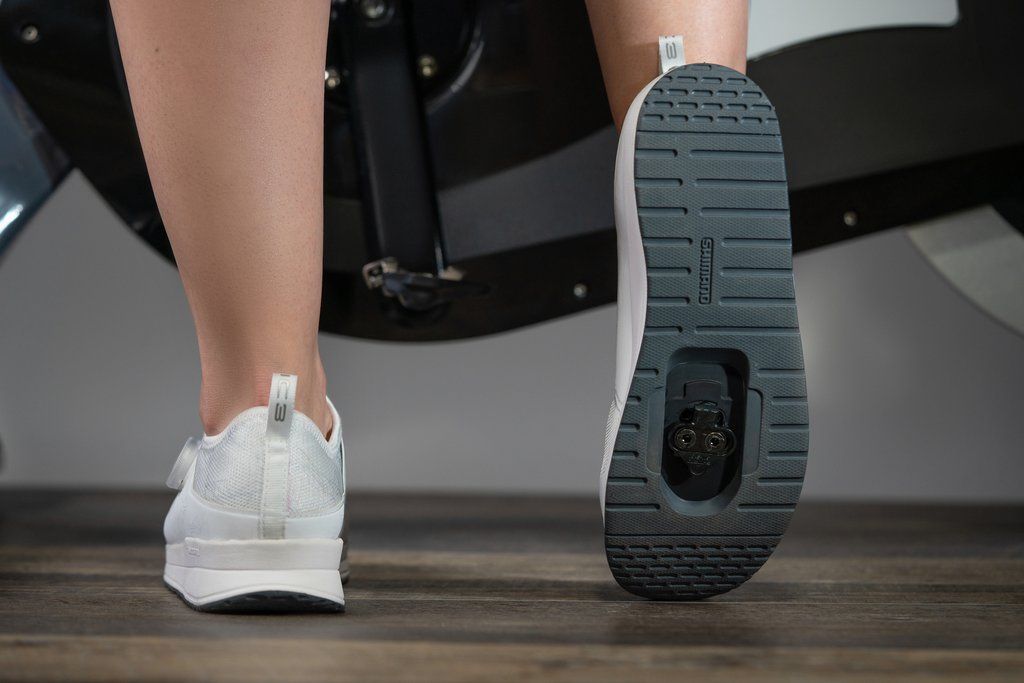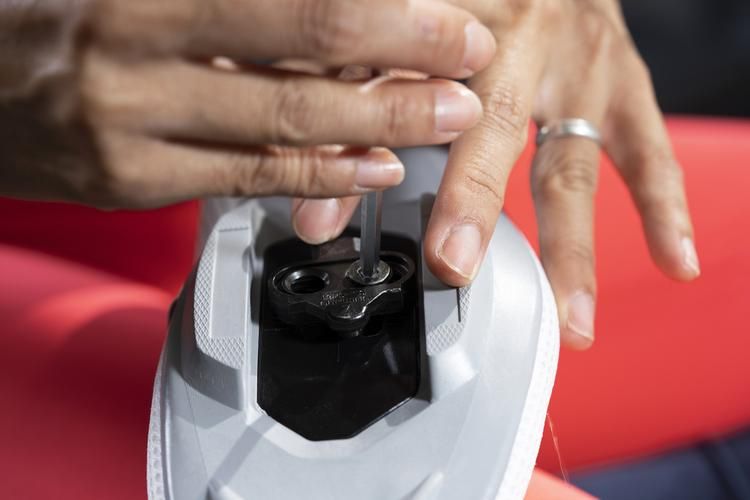Steps for installation
Installing cleats can be a little fiddly, but you’ll find it really empowering to be able to do it for yourself!
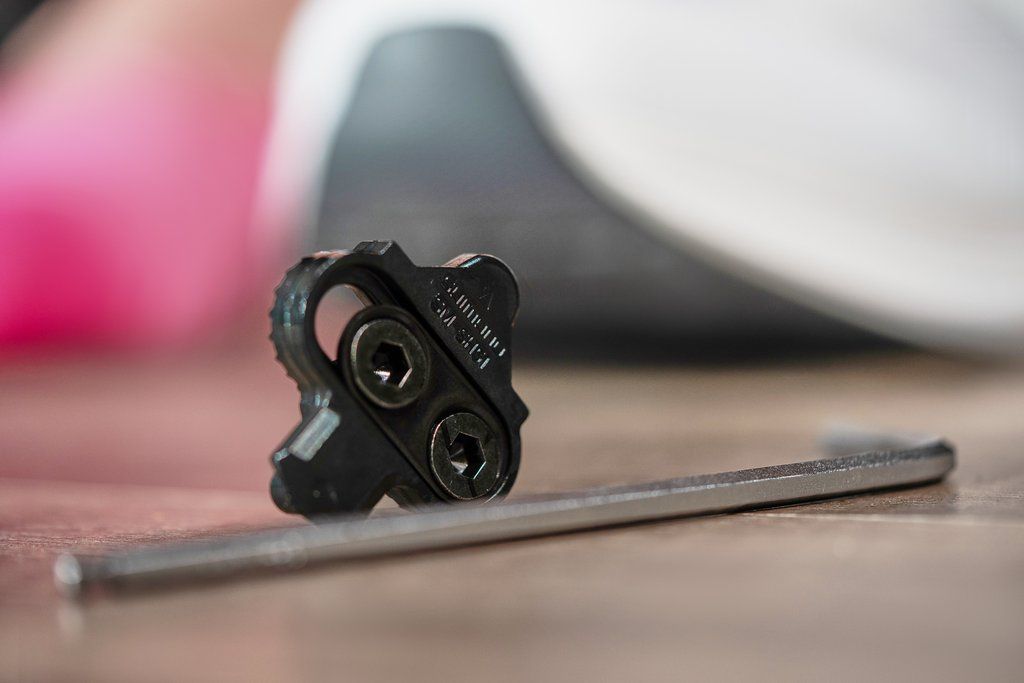
You’ll need a 4 mm hex wrench - also known as an Allen key.
Attaching the cleat
On the bottom of your SPD / 2-hole cleat compatible cycling shoe, you’ll see two slots around one third of the way down the shoe. Under these slots you’ll see there is a metal base plate with either two or four holes. This is where you will attach the cleat.
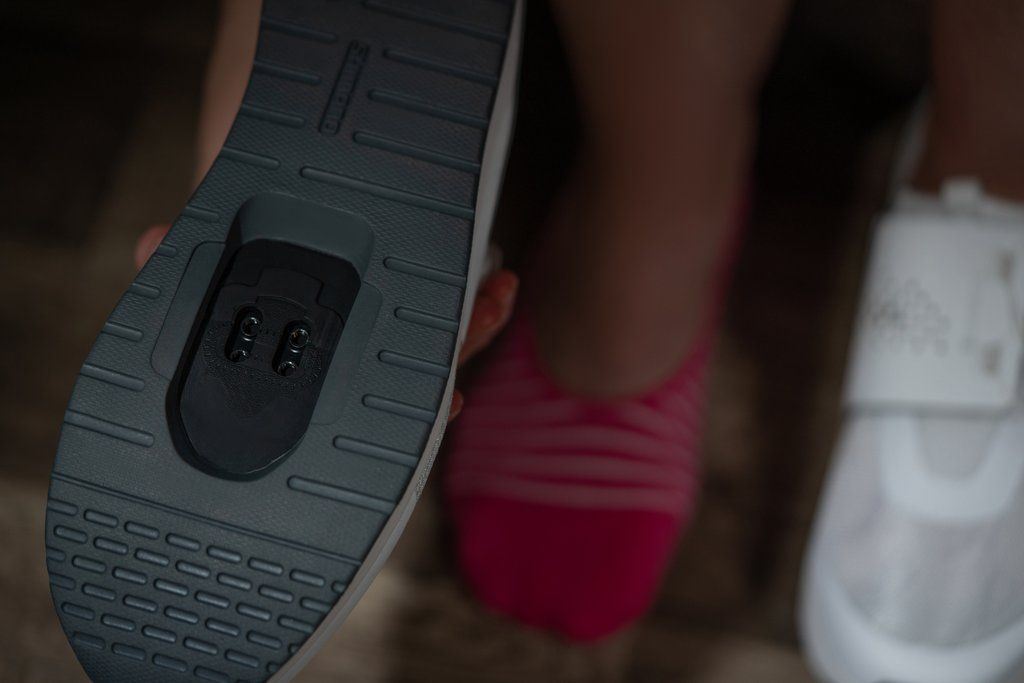
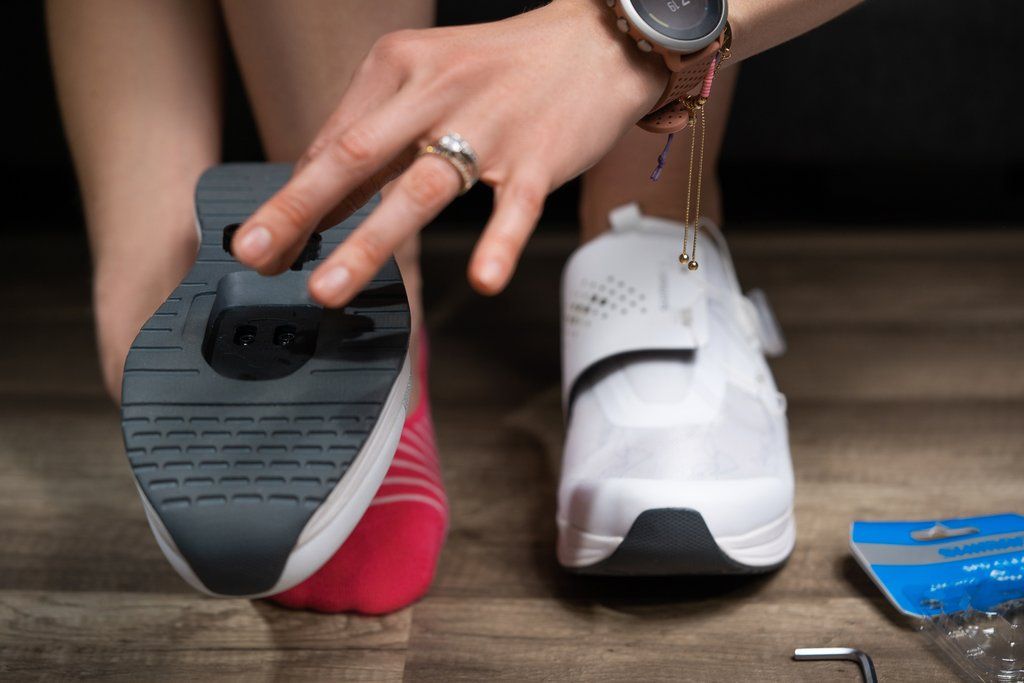
Position the cleat so that it’s lined up with the two holes in the base plate. Then place the cleat adaptor (the plate with two holes) on top of the cleat. The recessed holes of the adaptor should face up (so that the bolts will sit flush with the cleat when they’re tight). The cleats are the same for both left and right shoes.
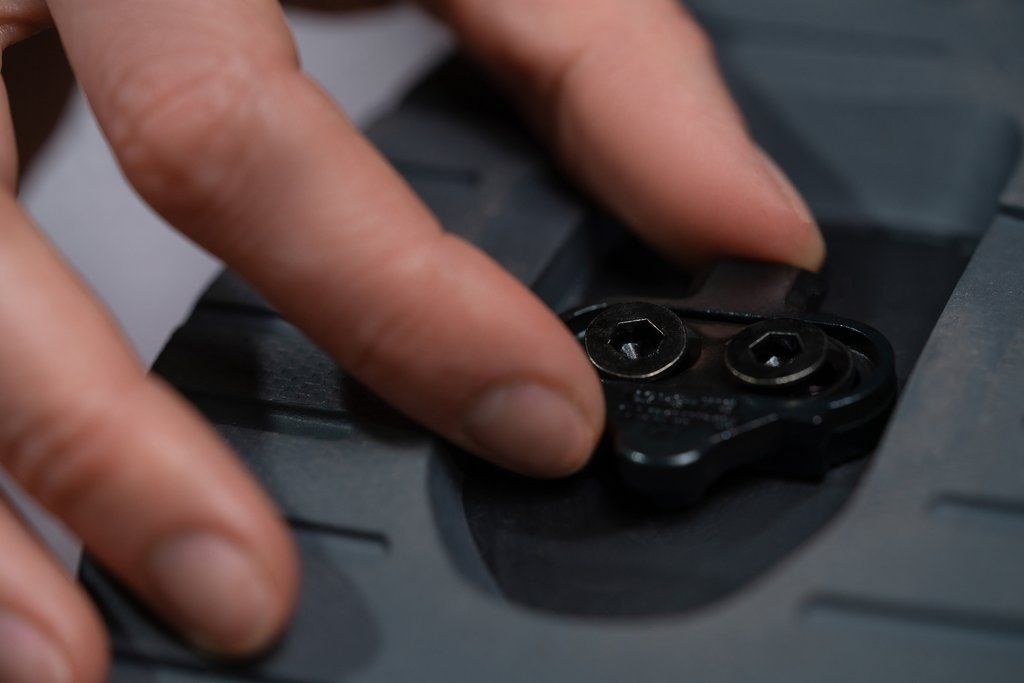
Place the bolts through the cleat adaptor and cleat so that the bolts sit in the holes on the base plate. Use a 4 mm hex wrench to tighten the bolts a few turns, but don’t do it all the way up yet.
Positioning the cleat
Now that the cleat is attached to your shoe, you need to make sure it’s in the right position for your optimal pedaling. You can adjust the cleat forward to back and left to right. You can also adjust where the front of the cleat points.
Here is a good starting position that will work for most people:
- To find the correct forward to back positioning: put the cleat in line with the ball of your foot (it’s helpful to mark where the ball of your foot is on the edge of your shoe using a ballpoint pen).
- Center the cleat on the sole so that it’s the same distance from the edge of the shoe on each side.
- Aim the point of the cleat to where your big toe will be in your shoe (again, you may want to mark on the edge of your shoe where your big toe is).
Securing the cleat
Once you’ve got the cleats in the right place, use the 4 mm hex wrench to firmly tighten the bolts. You’ll want to make sure it’s tight so that the cleat doesn’t twist around when you try to clip out of your pedals.

Following up
After you’ve pedaled with your new cleats, you might find you need to re-adjust them. With a good cleat position, you should feel that your knees are in line with your toes and that there’s no strain on your joints while you’re pedaling.
A qualified bike fitter is the best way to be sure you’ve got the perfect position. Your local bike shop or indoor cycling instructor are also good people to ask for help from.
